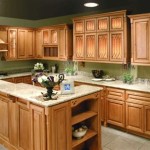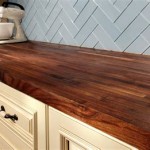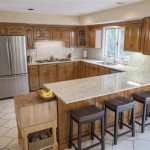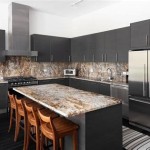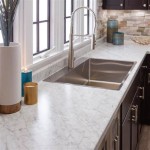Grey Cabinets With Grey Countertops: A Comprehensive Guide
The combination of grey cabinets with grey countertops has emerged as a dominant trend in contemporary kitchen and bathroom design. This pairing offers a sophisticated and versatile aesthetic, lending itself well to a variety of design styles, from minimalist modern to transitional farmhouse. The popularity of this color scheme is rooted in its ability to create a calming, neutral backdrop that allows other elements within the space to shine while simultaneously providing a sense of understated elegance.
Achieving a successful integration of grey cabinets and grey countertops requires careful consideration of several factors, including the specific shades of grey chosen, the material of the countertop, the lighting within the room, and the overall design aesthetic. This article will explore these crucial aspects, providing a comprehensive understanding of how to effectively utilize this popular color combination to create a visually appealing and functional space.
Key Considerations in Selecting Grey Shades
The term "grey" encompasses a vast spectrum of shades, ranging from light, almost white tones to deep, charcoal hues. When pairing grey cabinets with grey countertops, it is essential to carefully consider the undertones present in each shade. Undertones can be warm (leaning towards beige or brown), cool (leaning towards blue or green), or neutral. Mismatched undertones can lead to a discordant and visually unappealing result. For instance, pairing a warm grey cabinet with a cool grey countertop may create a clash, as the different undertones will compete with each other rather than harmonizing. Conversely, selecting shades with complementary undertones will create a cohesive and balanced aesthetic.
Furthermore, the intensity of the grey shades should also be carefully considered. Pairing a very light grey cabinet with a very dark grey countertop can create a dramatic contrast, while using similar shades of grey can create a more subtle and monochromatic effect. The choice depends on the desired aesthetic and the overall design goals. A lighter grey paired with a slightly darker grey countertop will create a brighter, more open feel, making it ideal for smaller spaces. A deeper grey, on the other hand, can add a sense of drama and sophistication, making it suitable for larger kitchens or bathrooms with ample natural light.
It is also crucial to consider the impact of lighting on the perceived color of the grey shades. Different types of lighting, such as natural sunlight, incandescent, fluorescent, or LED, can significantly alter the appearance of the grey shades. Before making a final decision, it is recommended to view samples of the selected grey shades in the actual space, under different lighting conditions, to ensure that they complement each other and achieve the desired effect.
Countertop Materials and Their Impact on the Overall Design
The material chosen for the grey countertop plays a significant role in the overall aesthetic and functionality of the space. Several popular options are available, each with its own unique characteristics and advantages. Quartz, granite, marble, and concrete are among the most common choices. Each material offers a distinct texture, pattern, and durability, influencing both the visual appeal and the long-term maintenance requirements.
Quartz countertops are an engineered stone made from crushed quartz crystals and resin. They are known for their durability, low maintenance, and resistance to stains and scratches. Quartz countertops are available in a wide range of grey shades and patterns, including solid colors and those that mimic the look of natural stone. This versatility makes quartz a popular choice for both modern and traditional designs. Furthermore, quartz is a non-porous material, making it highly hygienic and easy to clean.
Granite countertops are a natural stone that is prized for its durability, heat resistance, and unique variations in color and pattern. Granite countertops in grey shades often feature intricate veining and speckling, adding visual interest and character to the space. However, granite is a porous material and requires regular sealing to prevent staining. The sealing process involves applying a sealant to the surface of the granite to create a protective barrier against liquids and other substances. Despite the need for sealing, granite remains a popular choice for its natural beauty and durability.
Marble countertops are another natural stone option known for their luxurious appearance and elegant veining. Grey marble countertops, in particular, can add a touch of sophistication to any space. However, marble is a softer and more porous material than granite or quartz, making it more susceptible to scratches, stains, and etching. Marble countertops require more careful maintenance and are not recommended for high-traffic areas or kitchens where spills are frequent. Despite these drawbacks, the timeless beauty of marble continues to make it a desirable choice for those seeking a luxurious and elegant aesthetic.
Concrete countertops offer a modern and industrial look. They can be customized with various pigments and aggregates to achieve a wide range of grey shades and textures. Concrete countertops are durable and heat resistant, but they are also porous and require regular sealing to prevent staining. Concrete countertops can also be prone to cracking, especially if they are not properly sealed and maintained. However, the unique and industrial aesthetic of concrete makes it a popular choice for contemporary designs.
Lighting and Hardware Considerations
The lighting within the space significantly impacts the perceived color of the grey cabinets and countertops. As mentioned earlier, different types of lighting can alter the appearance of the grey shades. Therefore, it is essential to carefully consider the lighting plan and choose lighting fixtures that complement the color scheme. Natural light is always the most desirable, as it provides the truest representation of the colors. However, artificial lighting can be used to supplement natural light and create a more balanced and inviting ambiance.
Warm lighting, such as incandescent or soft white LED, can create a cozy and inviting atmosphere. However, it can also cast a yellowish hue on the grey shades, making them appear warmer. Cool lighting, such as fluorescent or daylight LED, can create a brighter and more energizing atmosphere. However, it can also cast a bluish hue on the grey shades, making them appear cooler. Neutral lighting, such as neutral white LED, provides a balanced and accurate representation of the colors.
In addition to the overall lighting plan, task lighting should also be considered. Task lighting, such as under-cabinet lighting, provides focused illumination for specific areas, such as countertops and stovetops. This type of lighting is essential for improving visibility and safety in the kitchen or bathroom.
The hardware chosen for the cabinets and countertops also plays a significant role in the overall design. The finish and style of the hardware should complement the grey color scheme and enhance the overall aesthetic. Metallic finishes, such as brushed nickel, stainless steel, and chrome, are popular choices for grey cabinets and countertops. These finishes provide a sleek and modern look. Darker finishes, such as black or oil-rubbed bronze, can also be used to create a more dramatic and contrasting effect. The style of the hardware should also be consistent with the overall design aesthetic. For example, sleek and minimalist hardware is ideal for modern designs, while more ornate hardware is suitable for traditional designs.
The backsplash is another important element to consider when designing a space with grey cabinets and grey countertops. The backsplash can provide a pop of color or texture, adding visual interest and depth to the design. White subway tiles are a classic choice that complements the grey color scheme. Glass tiles, ceramic tiles, and natural stone tiles are also popular options. The color and texture of the backsplash should be carefully chosen to complement the grey cabinets and countertops and enhance the overall aesthetic.
In conclusion, the successful integration of grey cabinets and grey countertops requires careful consideration of several factors, including the specific shades of grey chosen, the material of the countertop, the lighting within the room, and the hardware selected. By carefully considering these factors, it is possible to create a visually appealing and functional space that reflects the desired aesthetic and meets the specific needs of the user.

Gray Kitchen Cabinets Trends 2025 Updated
.webp?strip=all)
How To Pair Countertops With Gray Cabinets

12 Grey Kitchen Cabinets That Will Inspire And Delight You

Gray Kitchen Cabinets Trends 2025 Updated

Countertop Ideas For Gray Kitchen Cabinets

Kitchen With Gray Cabinets Why To Choose This Trend Decoholic

Dark Gray Kitchen Cabinets Countertop Light Backsplash Uvph 2024 Home 15 Ivory Homes

Countertop Ideas For Gray Kitchen Cabinets

Want Grey Kitchen Cabinets Here Are 9 Modern Ideas Decorcabinets Com

Grey Kitchen Cabinets Inspiration
See Also

